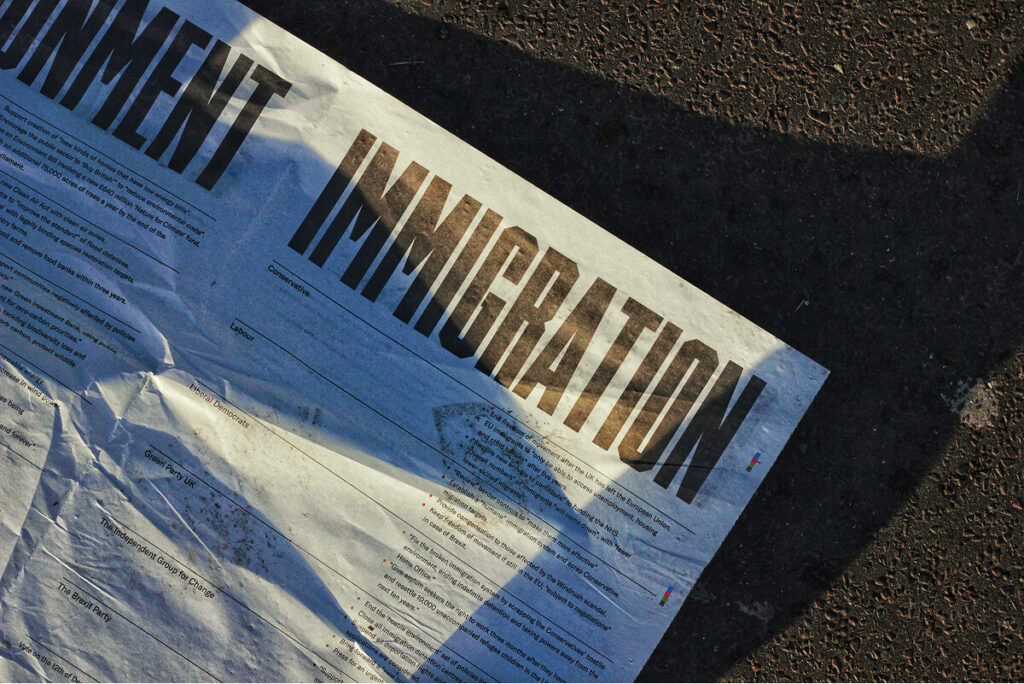Common-Law Relationships Under Scrutiny: A Sponsorship Refusal Case
February 7, 2025
Gill v. Canada (Citizenship and Immigration), 2025 FC 115
What defines a common-law partnership in Canadian immigration law? The Gill v. Canada (2025 FC 115) case offers insights into this important question, particularly in the context of spousal sponsorship. This post explores the case’s facts, legal background, and its significance for those navigating the immigration system.

A Missed Declaration: The Gill Sponsorship Case
The applicant, Karanvir Singh Gill, filed a spousal sponsorship application under the Spouse or Common-Law Partner in Canada class. However, his application was refused under paragraph 125(1)(d) of the Immigration and Refugee Protection Regulations (IRPR), which states that an applicant cannot be included in the class if the sponsor failed to declare the relationship when applying for their own permanent residence.
The sponsor submitted her permanent residence application on January 14, 2022, but did not include the applicant as her common-law partner. It later came to light that the applicant and the sponsor had been cohabiting since 2020, with shared financial responsibilities and public acknowledgment of their relationship. The sponsor’s omission of the applicant from her application became the primary basis for the refusal.
What Happened in the Gill Case?
- Timeline of the Relationship:
The applicant provided a detailed timeline describing his relationship with the sponsor, beginning in 2020. This included:- Cohabitation since 2020.
- Strengthened emotional bonds over time.
- Shared household expenses and financial interdependence, including e-transfers of funds.
- Public acknowledgment of their relationship.
- Procedural Fairness Letter:
On December 8, 2023, the applicant received a procedural fairness letter (PFL) outlining the concern that the sponsor had not declared him as a common-law partner in her permanent residence application. The letter invited the applicant to respond and address the omission. - Applicant’s Response:
In his response to the PFL, the applicant:- Acknowledged his relationship with the sponsor since 2020.
- Explained that he and the sponsor were unaware that their relationship qualified as a common-law partnership under Canadian immigration law.
- Asked for forgiveness for the omission, stating it was not intentional.
- Officer’s Decision:
The immigration officer treated the applicant’s response and the detailed relationship timeline as an acknowledgment of a common-law relationship that existed at the time of the sponsor’s permanent residence application in 2022. Based on this finding, the officer concluded that the applicant was excluded from the Spouse or Common-Law Partner in Canada class under paragraph 125(1)(d) of the IRPR.
Defining Common-Law Partnerships in Immigration
The case centers on the definition of a common-law partnership under Canadian immigration law. According to section 1(1) of the IRPR, a common-law relationship requires that two individuals cohabit in a conjugal relationship for at least one year.
In judicial reviews, the Federal Court applies the standard of reasonableness as defined in Canada (Minister of Citizenship and Immigration) v. Vavilov, 2019 SCC 65. This standard requires that decisions by immigration officers be:
- Transparent,
- Intelligible, and
- Justified.
The Court’s role is not to reassess the evidence but to determine whether the officer’s reasoning process was coherent and consistent with the law and the facts.
Court’s Analysis
Justice Battista analyzed the case by focusing on the reasonableness of the officer’s decision, particularly whether the evidence supported the conclusion that the applicant was in a common-law relationship with the sponsor at the time of her permanent residence application.
- Acknowledgment of a Common-Law Relationship:
The applicant’s timeline, which described cohabitation, financial interdependence, and public acknowledgment of the relationship, was sufficient evidence to establish that a common-law partnership existed. The applicant’s response to the PFL was treated as an admission of this fact. - Officer’s Interpretation of Evidence:
The officer reasonably concluded that the applicant’s omission from the sponsor’s permanent residence application violated paragraph 125(1)(d) of the IRPR. The officer’s reliance on the applicant’s own description of the relationship was consistent with the evidence presented. - Procedural Fairness:
The Court found no breach of procedural fairness. The applicant was provided an opportunity to address the concerns through the PFL and failed to provide compelling evidence to counter the officer’s conclusions. - Reasonableness of the Decision:
Justice Battista applied the Vavilov framework and determined that the officer’s decision was reasonable, as it was transparent, intelligible, and justified based on the facts and applicable law.
The Court's Final Decision
The Federal Court dismissed the application for judicial review, concluding that:
- The officer’s decision was reasonable and supported by the evidence.
- The applicant failed to demonstrate any reviewable error that warranted intervention by the Court.
- No questions were certified for appeal under paragraph 74(d) of the Immigration and Refugee Protection Act (IRPA).
Justice Battista also noted that there was no order regarding costs.

How Prior Cases Shaped the Gill Decision
Relevant Precedents and Case Law
In Gill, the Federal Court referred to and reinforced principles established in prior cases. Some of the key references include:
- Canada (Minister of Citizenship and Immigration) v. Vavilov, 2019 SCC 65:
Established the reasonableness standard for judicial reviews and emphasized that decisions must be justified and transparent. - Singh v. Canada (Citizenship and Immigration), 2024 FC 98:
Highlighted the importance of procedural fairness letters and the applicant’s responsibility to address concerns effectively. - Badwal v. Canada (Citizenship and Immigration), 2023 FC 612:
Clarified the definition of common-law partnerships under the IRPR and emphasized the need for applicants to understand the legal implications of their relationship status.
While the Court did not overturn any previous decisions, it upheld the principles from these cases and applied them to assess the reasonableness of the officer’s decision in Gill.
Implications for Spousal Sponsorship Applications
The Gill case highlights several important lessons for spousal sponsorship applicants and immigration practitioners:
- Understanding Common-Law Relationships:
Applicants must understand the legal definition of a common-law partnership and ensure they declare their relationship accurately when applying for immigration benefits. - Importance of Procedural Fairness Letters:
Procedural fairness letters offer applicants an opportunity to address concerns raised by immigration officers. Applicants must provide clear and convincing evidence to counter any allegations or omissions. - Reasonableness Standard in Judicial Reviews:
The Federal Court’s role in judicial reviews is limited to assessing the reasonableness of decisions. Applicants must demonstrate that a decision was unreasonable, not simply that it was unfavorable. - Impact of Omission:
Failing to declare a common-law partner in a permanent residence application can have serious consequences, including exclusion from the Spouse or Common-Law Partner in Canada class.
Final Thoughts
The decision in Gill v. Canada (Citizenship and Immigration), 2025 FC 115 underscores the importance of full transparency and accuracy in immigration applications. For applicants, it serves as a cautionary tale about the consequences of failing to declare a common-law partner. For practitioners, the case reinforces the importance of ensuring that clients understand their legal obligations and respond effectively to procedural fairness letters.
Ultimately, Gill reaffirms the Federal Court’s commitment to upholding the principles of reasonableness and fairness in immigration decision-making.
